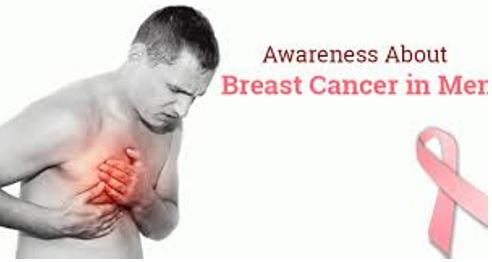Many people have the mentality that because men do not produce milk cannot get breast cancer. Well, you are wrong. A man breast cells and tissues can still develop cancer. Male Breast cancer is common in older men although it can occur at any age.
Men diagnosed with male breast cancer at an early age have a good chance for cure. Treatment typically involves surgery to remove the breast tissue. Other treatments such as chemotherapy and radiation may be recommended based on the level the cancer has spread.
WHAT CAUSES IT?
Studies have shown that male breast cancer occurs when some breasts cells divide more rapidly than healthy cells do. The accumulating cells form a tumor that may spread to nearby tissue, the lymph nodes or to other parts of the body.
WHERE DOES IT BEGIN IN MEN?
We are all born with a small amount of breast tissue which consist of milk producing glands, and ducts that carry milk to the nipples and fat. During puberty women begin developing more breast tissues and men do not, but because men are born with a small amount of breast tissue they can develop breast cancer.
TYPES OF BREAST CANCER DIAGNOSED IN MEN INCLUDE:
- Cancer that begins in the milk ducts {ductal carcinoma} nearly all male breasts is ductal carcinoma.
- Cancer that begins in the milk-producing glands. {Lobular carcinoma]. This type is rare in men because they have few lobules in their breast tissue.
- Other types include: Paget’s disease of the nipple and inflammatory breast cancer.
SYMPTOMS.
- Just like in women, you may develop a painless lump or thickening in your breast tissue.
- Changes to the skin covering your breast such as dimpling, puckering, redness or scaling.
- Changes in your nipple, such as redness or scaling or simply a nipple that begins to turn inward.
- Also, you might experience some discharge in your nipple.
- Breast pain.
- Bloody discharge from your nipple.
- A sudden unexplained change in the shape or size of your breast.
FACTORS THAT INCREASE THE RISK OF MALE BREAST CANCER.
- Older Age: The risk of breast cancer increases as you age. Male breast cancer is most often diagnosed in men in their 60’s.
- Exposure to Estrogen. If you take estrogen related drugs such as those used for hormone therapy for prostate cancer, your risk is increased.
- Family history of breast cancer. If you have a close family member with breast cancer you have a greater chance of developing the disease.
- Klinefelters syndrome. This syndrome occurs when boys are born with more than one copy of the x chromosomes. This syndrome causes abnormal development of the testicles. As a result, men with this syndrome produce lower levels of certain male hormones and more female hormones.
- Liver disease. Certain conditions such as cirrhosis of the liver can reduce male hormones and increase female hormones, increasing the risk of male breast cancer.
- Obesity is associated with high levels of estrogen in the body which increases your risk
- Testicle disease or surgery. Having inflamed testicles or surgery to remove a testicle can increase your risk of contracting the disease.
DIAGNOSIS AND TREATMENT.
The same techniques used in women are used in men. Physical exams, mammography, and biopsy’s [examining small samples of tissue under a microscope]
If you notice changes in your breast, it is time to see your doctor. The doctor will ask about symptoms and your family history. They will also carry out a physical examination and therefore suggests the following test.
- An ultrasound.
- Nipple discharge test.
- A biopsy.
Sometimes the doctor will recommend removing a lump and carrying out a biopsy at the same time.
TREATMENT.
When you are diagnosed with cancer several treatment options are available.
Options include:
Mastectomy the surgeon removes the whole breast and some of the surrounding tissue.
Breast conserving surgery. The surgeon removes only part of the breast.
Lumpectomy: The surgeon removes the affected lymph nodes.
- RADIATION THERAPY: some people may need radiation therapy after surgery to remove any remaining traces of cancer. It is also a treatment option in the later stages of the disease.
- ESTROGEN HORMONE THERAPY: In some cancers estrogen receptors are present on the walls of the cancerous cells, in this cases estrogen helps the cells to divide and grow.
- CHEMOTHERAPY: This is treatment with a drug that kills cancer cells. A doctor often gives it as an injection, but sometimes a person can take it by mouth, chemotherapy can prevent cancer from returning if a person uses it after surgery or treat the symptoms of late stage cancer that has spread to other parts of the body.
Adverse effects may include:
- Hair loss.
- Mouth sores.
- Nausea and vomiting.
- Changes in appetite.
- A high risk of infection.
- Easy bruising or bleeding.
